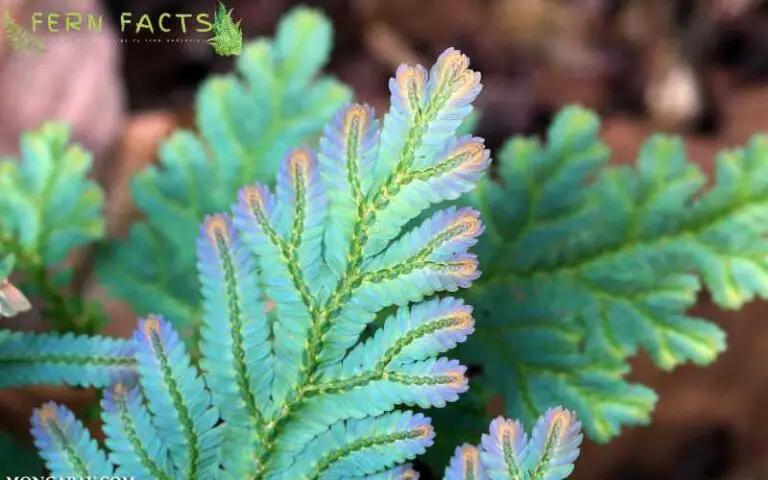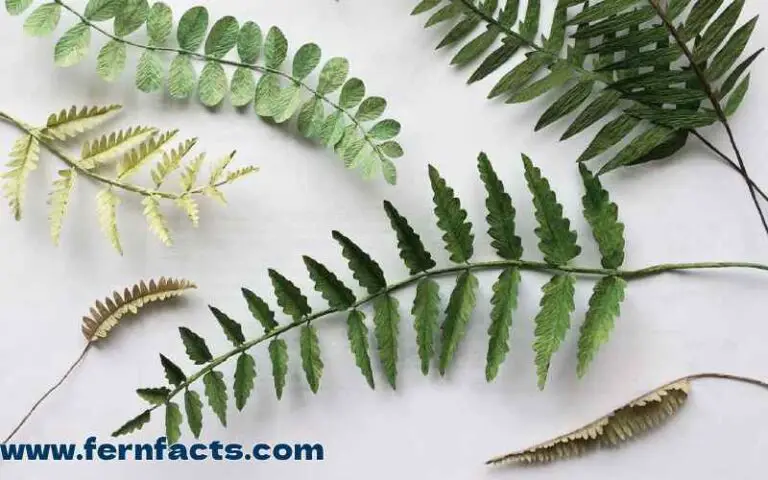How to Care for Frosty Fern
Have you ever heard about frosty fern? Do you know they are not actually real ferns but a variety of spike moss? However, their characteristics and fronds resemble ferns.
That’s why they are in the fern category. If you want to know more about these fern species for your home garden purpose, then stay tuned to this article.
Here I’ll illustrate the overall idea and characteristics of frosty ferns along with their growing requirements. By understanding their growing tendency, you’ll be able to thrive on this fern at your house effortlessly.
Overview of Frosty Fern
- Botanical name: Selaginella kraussiana
- Plants: moss plant
- Native range: Africa, Europe, and New Zealand
- Shade requirements: partial to full shade
- Height: around 10 to 12 inches
- Soil: acidic, neutral, Well-drained
- Temperature: 75 to 80°F
- Humidity: around 70 to 80%
Frosty ferns are not a real fern species but a variety of spike moss. However, its fronds resemble ferns fronds that’s why it’s in the ferns category.
These spike mosss also have similar features and characteristics to ferns. For instance, these frosty ferns germinate themselves via spores. That’s another reason to call this spike moss a fern.
Just like other ferns, These ferns are also low-growing ferns with green and white combined foliage. Their beneath stems are generally known as runners and it grow horizontally.
Their average height is around 12 inches and they need at least 70 % humidity around themselves to thrive. These ferns can be actively grown in a greenhouse environment.
On the other hand, it’s kind of difficult to grow them in a normal home environment. That’s why, any terrarium, vivarium would be the best container to grow these frosty ferns at home.
These frosty ferns can be found invasively in New Zealand. Apart from New Zealand, these ferns are also found in Africa, Europe, and some parts of the US as well.
Frosty Fern’s Care and Growing Tips
Now let’s look at some general growing requirements of frosty ferns so that you can easily grow these ferns in your home garden.
Light Requirements
These frosty ferns are fond of dappled shade or partially bright places to thrive. A medium to fully shaded place would be an ideal environment for them to live.
In such places, your ferns will thrive. However, like every other fern, these frosty ferns also don’t have a tolerance for direct sunlight.
Still, a morning mild sunlight or afternoon light could be okay for them to have but not the midday sunlight. Midday sunlight or sunlight exposure can give a sunburn to your frosty fern.
Ultimately your beautiful green and white foliage will turn into brown and black. Thus, try to give your frosty ferns partial to fully shaded places to thrive.
Soil Mixture
These frosty ferns prefer rich humus and well-drained soil to thrive and grow actively. Also, prepare their soil with slightly acidic around 5.5 to 6.0. And so, mix organic matter, peat moss, leaf mold, and perlite to enhance the soil’s texture.
Besides, you need to keep them in pots that have drainage holes. So that the excessive water can be drained out with that hole.
Water
For watering your frosty ferns, I would suggest you do a moderate amount of watering to keep them thriving. For example, you can water twice a week in normal seasons except in the winter.
In winter times, you can reduce the watering amount to once a month. Or just check the soil before you are about to water. Do not overwater your frosty ferns, it can rotten their roots.
Even the outdoor frosty ferns you need to water them if your soil feels dry. Similarly, if your ferns are in the terrarium, then you also have to be very careful regarding watering.
Temperature and Humidity
Frosty ferns prefer 75°F to 80 °F temperatures to thrive. Therefore, try to maintain warm temperatures around your fern plants.
You could imitate the greenhouse effect atmosphere for your frosty ferns, which will help your ferns to bloom. Also, try not to fall the temperature below 50°F because frosty ferns can’t survive in cold seasons.
You might need to relocate your ferns to warmer places before winter arrives. Similarly, these ferns also prefer high humidity to live. That’s why a terrarium or greenhouse atmosphere can give them their ideal atmosphere.
Also, you can buy a humidifier for your ferns to make the room temperature balanced. If you don’t want to buy a humidifier, you can also use a pebble tray to increase the humidity level.
Fertilizer
You need to feed your frosty ferns on a monthly basis during their growing seasons. Its recommended to feed your frosty ferns with organic fertilizer once a week during their growing period.
Similarly, in winter seasons you can just feed them once in two weeks. While feeding your plants, thoroughly examine them whether there are any side effects like yellow fronds, curled or crispy fronds or not.
If you notice then immediately stop fertilizing until they revive.
Common Problems of Frosty Ferns
Frosty ferns are not very prone to pests and infection. However, you might face some problems due to a lack of care and maintenance.
Yellow Fronds
they might get yellow fronds or curled, brown fronds due to excessive sun exposure. It can also happen due to over-fertilizing.
In such cases, you need to identify the cause and have to take action. If the cause is over-sun exposure, you need to give them their ideal atmosphere to thrive.
Shift them to shaded places from where they can get filtered sunlight. Conversely, If the cause is over-fertilizing then stop feeding your plant until they become healthy again.
Brown Fronds
Brown Fronds are a sign of a lack of humidity in the air. That means your frosty ferns are not getting enough humidity. That’s why you need to increase the humidity level around your fern.
Buy a humidifier or use a pebble tray to increase the humidity. Alternatively, it can also happen due to dry soil. If Your plants are dehydrated then their fronds can turn brown due to lack of moisture.
In such situations, increase the watering level to keep them hydrated.
Closing line
In short, frosty ferns are very elegant plants that can be a great addition to your house garden.
By giving them their ideal condition like indirect sunlight, moderate watering, warm temperatures, and high humidity you can thrive these frosty ferns at your house very effortlessly.
Similarly, growing these ferns in baskets and terrariums can intensify their beauty in your home garden.







